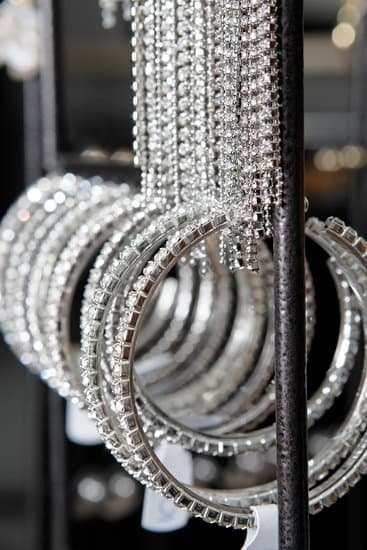The history of African tribal jewelry is a mesmerizing tapestry of ancient traditions, cultural significance, and the evolution of fashion. From beads to shells, and metals, the beauty of African tribal jewelry has transcended time and continues to capture the imagination of people around the world.
This article aims to provide a comprehensive summary of the rich history of African tribal jewelry, exploring its origins, cultural significance, evolution in the fashion world, popular types, influential designers and artisans, and the importance of preserving its traditions.
For centuries, African tribal jewelry has been an integral part of traditional rituals and ceremonies, serving as symbols of status, identity, and spiritual beliefs within various African cultures. The origins of these intricate adornments can be traced back to ancient traditions that have withstood the test of time and continue to inspire modern interpretations. Each piece tells a unique story that reflects the diversity and richness of Africa’s cultural heritage.
As we delve into the history of African tribal jewelry, we will unravel the cultural significance behind these handmade treasures – from their symbolism to their traditional use in ceremonies. Additionally, we will explore how these timeless pieces have made their mark on the fashion world, influencing contemporary designs and captivating audiences with their exotic allure. Join us on this journey through time as we celebrate the enduring beauty and cultural importance of African tribal jewelry.
Origins of African Tribal Jewelry
African Tribal Jewelry has a rich and storied history that dates back centuries. From ancient traditions to modern interpretations, the origins of African Tribal Jewelry have deep roots in the cultural heritage of various African tribes. The jewelry has been an integral part of traditional attire and has evolved over time to become a significant aspect of African fashion and heritage.
Ancient Traditions
The origins of African Tribal Jewelry can be traced back to ancient traditions, where jewelry was not only used for adornment but also held symbolic and spiritual significance. Different tribes used materials such as beads, shells, and metals to create intricate and meaningful pieces that were passed down through generations. These pieces often reflected the wearer’s social status, marital status, or tribal affiliations.
Modern Interpretations
In recent times, African Tribal Jewelry has experienced a renaissance with modern interpretations that combine traditional craftsmanship with contemporary design aesthetics. This has led to the creation of unique pieces that blend the old with the new, appealing to a global audience while still honoring their cultural roots. Many designers and artisans are embracing these ancient techniques to create jewelry that is both fashionable and culturally significant.
Summary of African Tribal Jewelry Magazine History
The history of African Tribal Jewelry has been extensively covered in various magazines dedicated to jewelry, fashion, and culture. These publications have documented the evolution of this unique form of adornment, shedding light on its cultural significance and impact on the fashion world. They serve as a valuable resource for those seeking to understand and appreciate the timeless beauty and cultural importance of African Tribal Jewelry.
Cultural Significance of African Tribal Jewelry
The cultural significance of African tribal jewelry is deeply rooted in the symbolism and tradition of various African communities. Each piece of jewelry carries unique meanings that reflect the values, beliefs, and social status within these societies.
Symbolism in African Tribal Jewelry
African tribal jewelry is often adorned with symbols that hold special significance within the community. These symbols can represent various aspects of life such as fertility, protection, strength, or even spiritual connection. For example, the use of certain animal motifs or geometric patterns in jewelry can symbolize important cultural and spiritual beliefs.
Tradition and Rituals
In many African tribes, the wearing of specific types of jewelry is tied to traditional rituals and ceremonies. These pieces are often passed down from generation to generation as part of a rite of passage or as a way to honor ancestors. The craftsmanship and design of these pieces are also significant as they showcase the skills and artistry of the community’s artisans.
Personal Expression and Identity
African tribal jewelry serves as more than just adornment; it is a form of personal expression and identity within the community. The type and style of jewelry worn by an individual can communicate their social status, age, marital status, and even their role within the community. It forms an essential part of self-expression and storytelling within African tribal cultures.
Understanding the symbolism and tradition behind African tribal jewelry allows for a deeper appreciation of its beauty and cultural importance. This rich history has played a significant role in shaping not only fashion trends but also preserving the heritage and identity of countless African communities throughout history.
Evolution of African Tribal Jewelry in the Fashion World
African tribal jewelry has a rich and fascinating history that spans centuries and continues to evolve in the modern fashion world. The traditional jewelry of various African tribes has inspired contemporary designers, leading to a fusion of cultural heritage and modern style. This evolution has brought new attention to the beauty and significance of African tribal jewelry, making it a popular choice for those seeking unique and meaningful accessories.
The influence of African tribal jewelry on the fashion world can be seen in the use of traditional materials such as beads, shells, and metals in modern designs. Designers often incorporate these elements into their work, creating pieces that pay homage to the traditions of African tribes while also appealing to a global audience.
The bold colors, intricate patterns, and striking designs of African tribal jewelry have made it a sought-after fashion statement for those looking to make a statement with their accessories.
Moreover, the popularity of African tribal jewelry in the fashion world has led to an increased appreciation for the cultural significance behind each piece. By embracing these traditional designs, fashion enthusiasts are not only making a style statement but also acknowledging and respecting the heritage from which these designs originated. As a result, African tribal jewelry is no longer confined to its original cultural context but has become a symbol of diversity and inclusivity in the fashion industry.
Influential designers and artisans have also played a pivotal role in bringing African tribal jewelry to the forefront of the fashion world. Their innovative interpretations and creative collaborations have helped elevate the status of this traditional art form, showcasing its timeless beauty and cultural importance on runways, red carpets, and in high-end boutiques around the globe.
Popular Types of African Tribal Jewelry
The history of African tribal jewelry is rich and diverse, with a tradition that dates back to ancient times. One of the most popular and enduring types of African tribal jewelry includes beads, shells, and metals. These materials have been used for centuries by different African tribes to create stunning pieces that hold cultural and symbolic significance.
Beads are perhaps the most iconic material used in African tribal jewelry. They come in a variety of shapes, sizes, and colors, and are often used to create intricate patterns and designs. Beads are made from materials such as glass, wood, bone, and even seeds. Different tribes use beads in unique ways, whether it’s weaving them into necklaces, bracelets, or adorning clothing and accessories.
Shells are another important component of African tribal jewelry. For many coastal tribes, shells hold deep symbolism and are often associated with the sea and its bounty. Shells are used to create earrings, necklaces, and bracelets, with each piece representing different elements of nature or holding spiritual significance.
Additionally, metals such as gold, silver, copper, and brass are also widely used in African tribal jewelry. These metals are often crafted into bold statement pieces that showcase the artisan’s skill and expertise.
It is essential to recognize the historical significance of these materials in African tribal jewelry making as they continue to play a vital role in preserving cultural traditions and heritage across the continent.
| African Tribal Jewelry Material | Significance |
|---|---|
| Beads | Used for intricate patterns; made from glass, wood, bone |
| Shells | Symbolism tied to the sea; used for earrings, necklaces |
| Metals | Goldsilver,copper,and brass crafted into bold statement pieces |
Influential African Tribal Jewelry Designers and Artisans
African tribal jewelry has a rich history that dates back centuries, and the designers and artisans who create these beautiful pieces play a significant role in preserving and evolving this tradition. These talented individuals draw inspiration from their cultural heritage, incorporating traditional elements into their designs while also adding modern twists to appeal to contemporary audiences. Through their work, they contribute to the continued relevance of African tribal jewelry in today’s fashion landscape.
One influential designer in the realm of African tribal jewelry is Adornment Africa, known for their unique combination of traditional craftsmanship with a contemporary aesthetic. Their pieces often feature a mix of beads, shells, and metals, reflecting the diverse materials used in African tribal jewelry. This fusion of old and new has garnered attention from fashion enthusiasts worldwide, propelling African tribal jewelry into the global spotlight.
Another noteworthy figure in the world of African tribal jewelry is artisan Kwame Baah. Hailing from Ghana, Baah’s creations pay homage to his Ashanti heritage, incorporating symbols and motifs that hold deep cultural significance.
His work not only showcases the beauty of African tribal jewelry but also serves as a means of preserving traditions through wearable art. This dedication to honoring ancestral customs while pushing creative boundaries underscores the importance of artists like Baah in keeping the legacy of African tribal jewelry alive.
The influence of these designers and artisans extends beyond their individual creations; they inspire others to explore the world of African tribal jewelry, ensuring that this integral part of African heritage continues to thrive. By celebrating their craft and supporting their work, we contribute to the preservation of an art form that has endured through generations.
| African Tribal Jewelry Designer/Artisan | Contribution |
|---|---|
| Adornment Africa | Combines traditional craftsmanship with a contemporary aesthetic |
| Kwame Baah | Incorporates symbols and motifs that hold deep cultural significance into his designs |
Importance of Preserving African Tribal Jewelry Traditions
African tribal jewelry has a rich and diverse history that spans centuries and has roots in various traditions across the continent. It is important to preserve these traditions to honor the cultural significance and symbolism of African tribal jewelry. Here are some reasons why preserving these traditions is crucial:
- Cultural Heritage: African tribal jewelry reflects the unique cultural heritage of different tribes and communities across the continent. By preserving these traditions, we are able to pass down valuable knowledge about craftsmanship, symbolism, and techniques from generation to generation.
- Identity and Pride: For many African communities, tribal jewelry holds great importance as it is often used as a way to express one’s identity, status, and belonging. By preserving these traditions, we are able to ensure that future generations can take pride in their heritage and continue to use jewelry as a form of cultural expression.
- Economic Empowerment: Many artisans and designers who specialize in creating African tribal jewelry rely on these traditions for their livelihood. By supporting the preservation of these traditions, we are able to contribute to sustainable economic opportunities for these individuals and their communities.
Overall, preserving African tribal jewelry traditions is essential for maintaining cultural heritage, showcasing identity and pride, and supporting economic empowerment within Africa. It ensures that the timeless beauty and cultural importance of this jewelry continues to thrive for generations to come.
Conclusion
In conclusion, the history of African tribal jewelry is a rich tapestry that reflects the cultural heritage and artistic ingenuity of the continent. From ancient traditions to modern interpretations, African tribal jewelry has evolved but still remains deeply rooted in symbolism and tradition. The use of beads, shells, and metals in this jewelry art form has not only stood the test of time but has also made its mark in the fashion world.
As we have explored in this magazine’s history, African tribal jewelry holds significant cultural importance and deserves to be preserved for future generations. The work of influential designers and artisans continues to showcase the timeless beauty of these pieces while honoring their traditional roots. It is essential to recognize and celebrate the craftsmanship and artistic expressions that are intricately woven into the fabric of African tribal jewelry.
As we look to the future, it is important to continue supporting efforts to preserve and promote African tribal jewelry traditions. By doing so, we can ensure that these exquisite pieces continue to be appreciated for their cultural significance and enduring beauty.
In a globalized world, it is crucial to recognize and respect the origins and stories behind each piece of African tribal jewelry, understanding that they represent more than just adornment-they are a living testament to Africa’s rich cultural heritage.
Frequently Asked Questions
What Is the History of the African Jewelry?
The history of African jewelry dates back thousands of years, with evidence of jewelry-making found in ancient Egyptian tombs and Nubian cultures. Throughout the centuries, different African tribes and civilizations developed unique styles and techniques for creating jewelry.
What Does African Jewelry Symbolize?
African jewelry symbolizes various aspects of life, including status, spirituality, and cultural identity. For example, certain pieces may signify a person’s social standing within the community or their connection to ancestral spirits. Many designs also incorporate symbols with specific meanings.
What Is the Importance of the Jewelry in West African Society?
In West African society, jewelry holds significant importance in both traditional and modern contexts. Historically, elaborate jewelry was worn by royalty and nobility as a display of wealth and power. Today, it continues to be a form of self-expression and can also serve as a means of economic empowerment for artisans and craftsmen within the region.

Welcome to my jewelry blog! My name is Sarah and I am the owner of this blog.
I love making jewelry and sharing my creations with others.
So whether you’re someone who loves wearing jewelry yourself or simply enjoys learning about it, be sure to check out my blog for insightful posts on everything related to this exciting topic!





